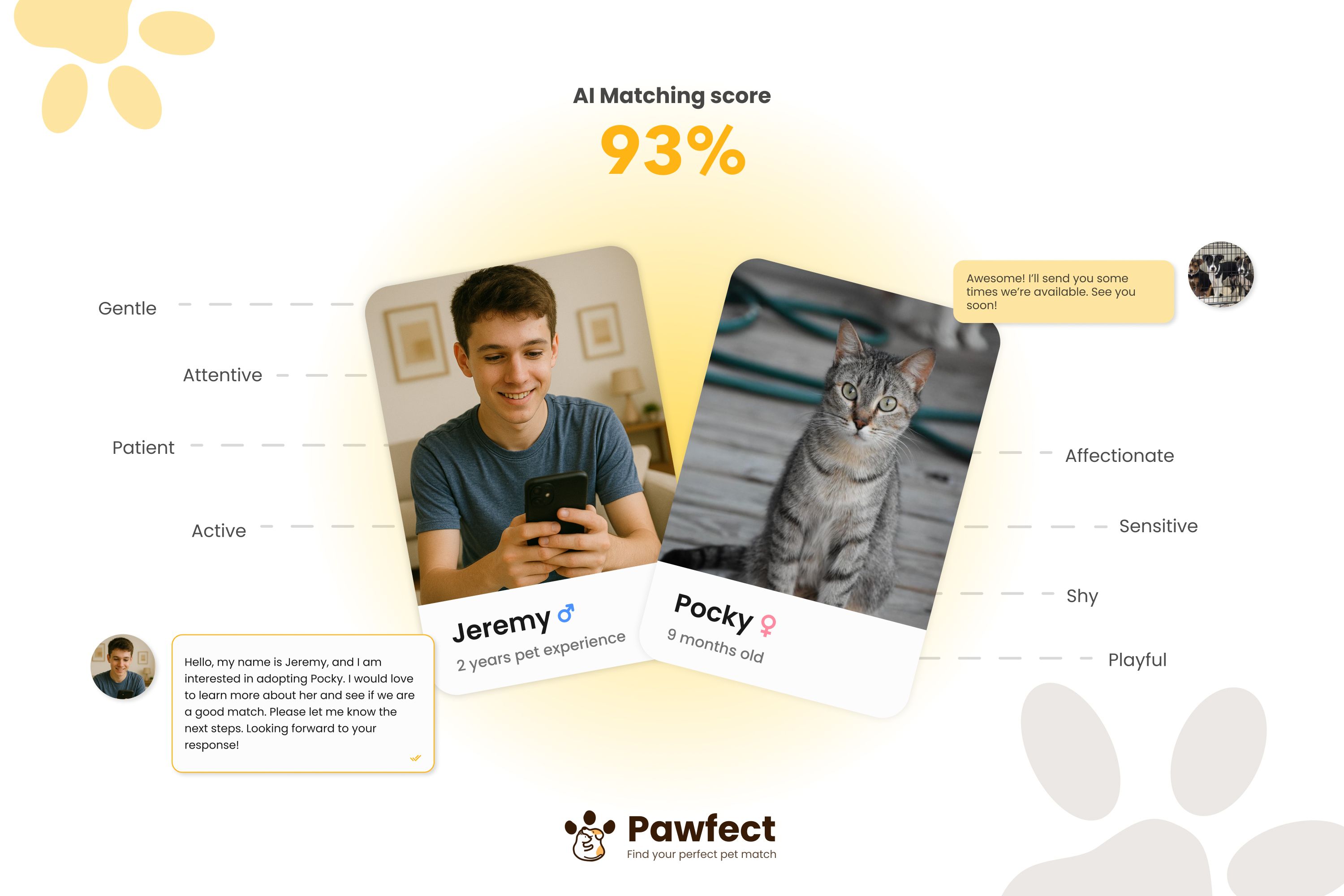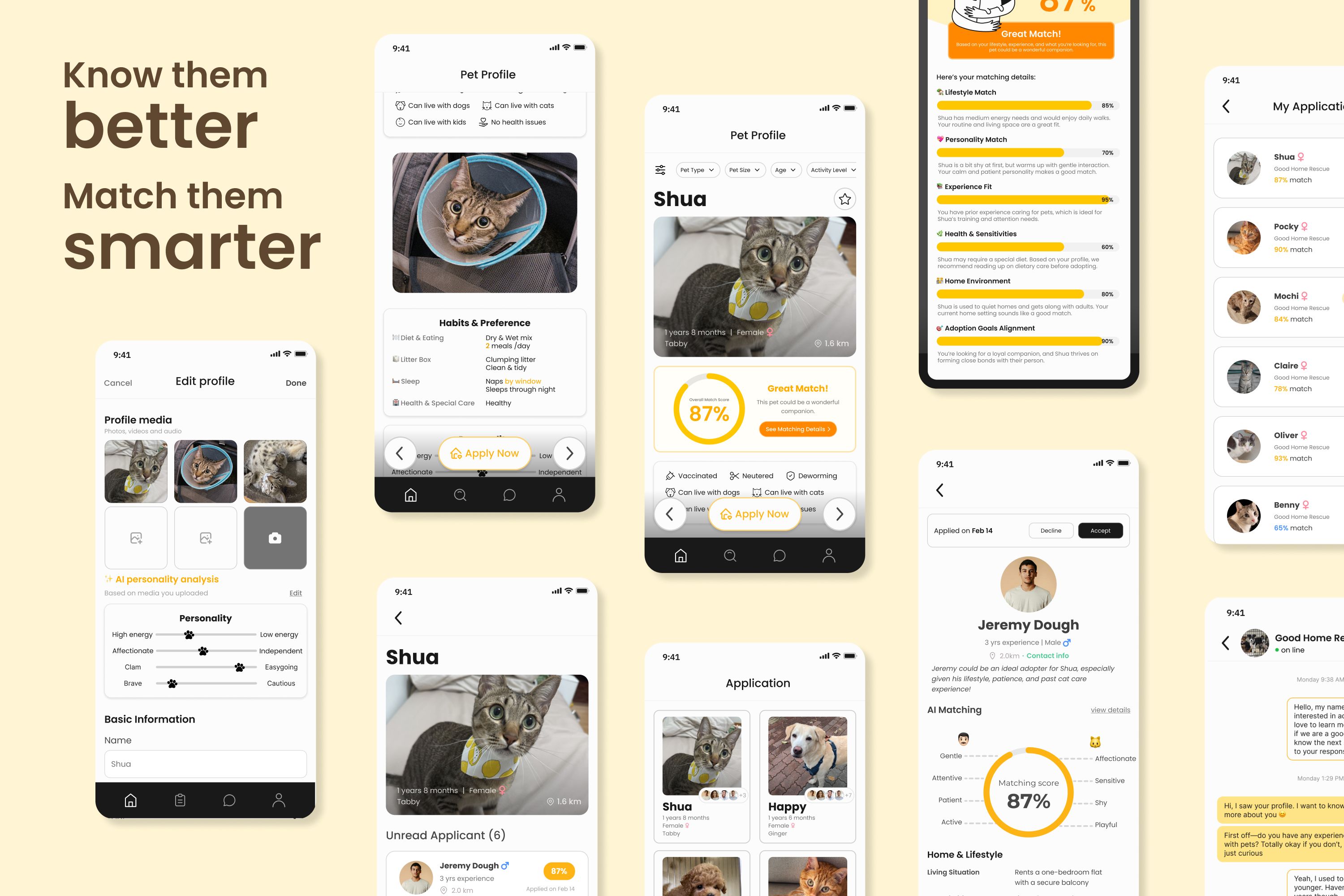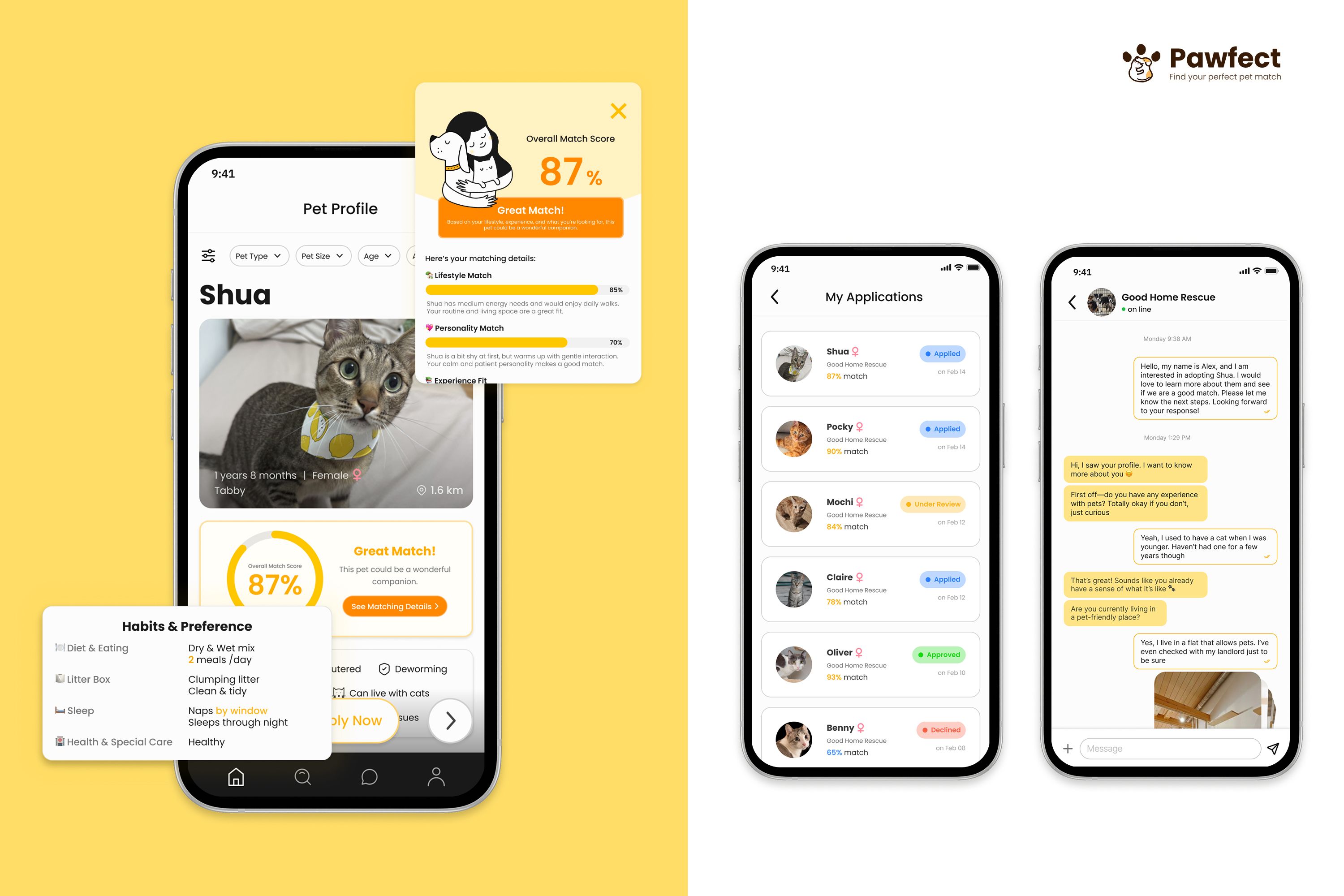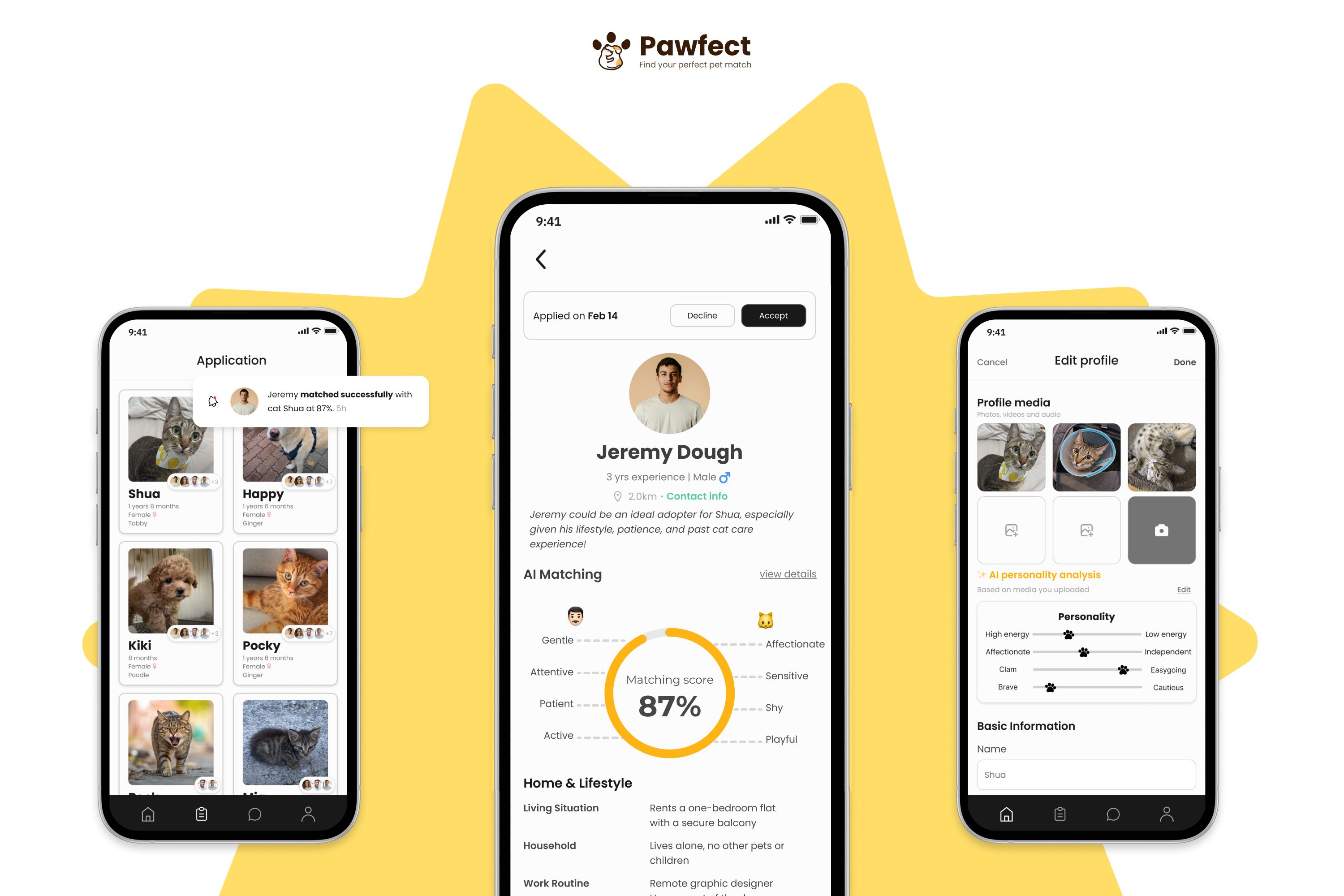
Designers
Evelyn Chen, Shirley Hsieh, Qinlin Yin, Jiaqi Dong, YiChing Chen, Caroline Peng
Year
2025
Category
New Talent
Country
United Kingdom
School
Goldsmiths, University of London
Teacher
Rabail Tahir
»Pawfect addresses pet abandonment by improving adoption matching and reducing returns. This enhances animal welfare and tackles a socially relevant problem, offering strong user value. The concept offers a positive user experience that is both emotionally resonant and well-crafted. Though the AI logic is still in development, it shows promising potential. With further algorithm refinement, a stronger business model, and broader stakeholder involvement, Pawfect could evolve into a high-impact product.«
UX Design Awards Jury 2025 Autumn

Three questions to the project team
What was the particular challenge of the project from a UX point of view?
The biggest UX challenge was balancing what users want with what pets actually need. Many adopters tend to choose pets based on appearance or breed, which can lead to mismatches and eventual returns. Our goal is to design an experience that helps users make more informed and meaningful choices, benefiting both adopters and animals. This meant shifting the focus from fast to right adoptions, placing more weight on personality and lifestyle fit rather than just photos. Even small UX decisions—like using neutral instead of negative personality tags like “aggressive” or “fearful”—played a part in giving pets a fairer chance without misleading potential adopters. It was about guiding people toward better-fit, lasting matches.
What was your personal highlight in the development process? Was there an aha!-moment, was there a low point?
Before development, some interviewees told us AI matching sounded cool, but they weren’t sure they could trust the results. That stuck with us. Later, during testing, we saw the same thing: users ignored match scores or questioned them. It was a low point because we realized the core feature of our product wasn’t connecting. The turning point came when we redesigned how we presented the AI—adding clear explanations, relatable personality tags, and visual scores with reasons. In the next test round, people actually read them and said they felt more confident. We learned that even great tech doesn’t matter if people don’t understand or believe in it. Trust is a UX problem, too.
Where do you see yourself and the project in the next five years?
In five years, we see this project evolving into a trusted system for ethical, data-driven pet adoption, starting from the UK. Our first step is to collaborate with local shelters and adapt the platform to different operational needs, big or small, to ensure it works seamlessly in real-world settings. We also aim to make adoption more inclusive by designing for a wider range of users, including elderly individuals living alone, through accessible, emotionally supportive UX. By combining real-time behavioral insights with ongoing feedback loops, we aim to reduce return rates by 15% or more and ultimately redefine adoption as a personalized, lifelong connection, not just a one-time decision.


